
Latitude 38 Celebrates 45 Years of Sailing News and Stories
Everyone loves a celebration, and this month we’re celebrating the 45th anniversary of Latitude 38 sailing magazine. The first issue hit the docks in April 1977, and we’ve been bringing you a new issue month after month ever since! We owe much of our longevity to you, our salty readers, our loyal advertisers, and our worldwide community of sailors who continue to raise their sails and celebrate life on the water. ⛵️
To commemorate this outstanding event, for the entire month of April we are hosting a Latitude 38 trivia contest: What month and year did we publish our 500th issue? In what issue does Racing Sheet first appear? What year was the first ’Lectronic Latitude digital newsletter published?
Follow the link to the Latitude 38 45th Anniversary Trivia Contest and submit your answers to these questions, and more, for a chance to win a prize pack with swag and a year-long subscription to Latitude 38. (We do give hints, so even our editors should be able to answer them all correctly.)
Trivia Contest ends at 5 p.m. on April 30. Winners will be announced on May 10, and the answers will be published in the May issue.
Plus, this Saturday we will be hosting an in-person 45th-anniversary celebration at the Spring Fling show in Alameda, hosted by Svendsen’s Marine & Industrial Supply. Stop by our booth between 3 p.m. and 5 p.m., have a brew on us, and meet some of the crew. It’s one way in which we can say, “THANK YOU!”
Thanks for reading and supporting sailing for 45 wonderful years!
- General Sailing
- Cruising
- Latitude 38 Magazine
- Chartering
- Community Sailing
- West Coast Sailing
- Good Jibes
Feel the Good Jibes With Brady Trautman and Alex Blue
This week’s host, Nicki Bennett, is joined by Brady Trautman and Alex Blue to chat about finding what you love on the water and sailing as a community. Brady and Blue have over 100,000 nautical miles of combined sailing experience, including 14 years sailing around the world, and empower others to start their sailing journey through their sailing school and film company, Cruisers Academy. Hear how to turn your passion for sailing into a career, how to sail as a couple, and about the behind-the-scenes of their 80° North docuseries, the healing power of sailing, and how the duo first met.
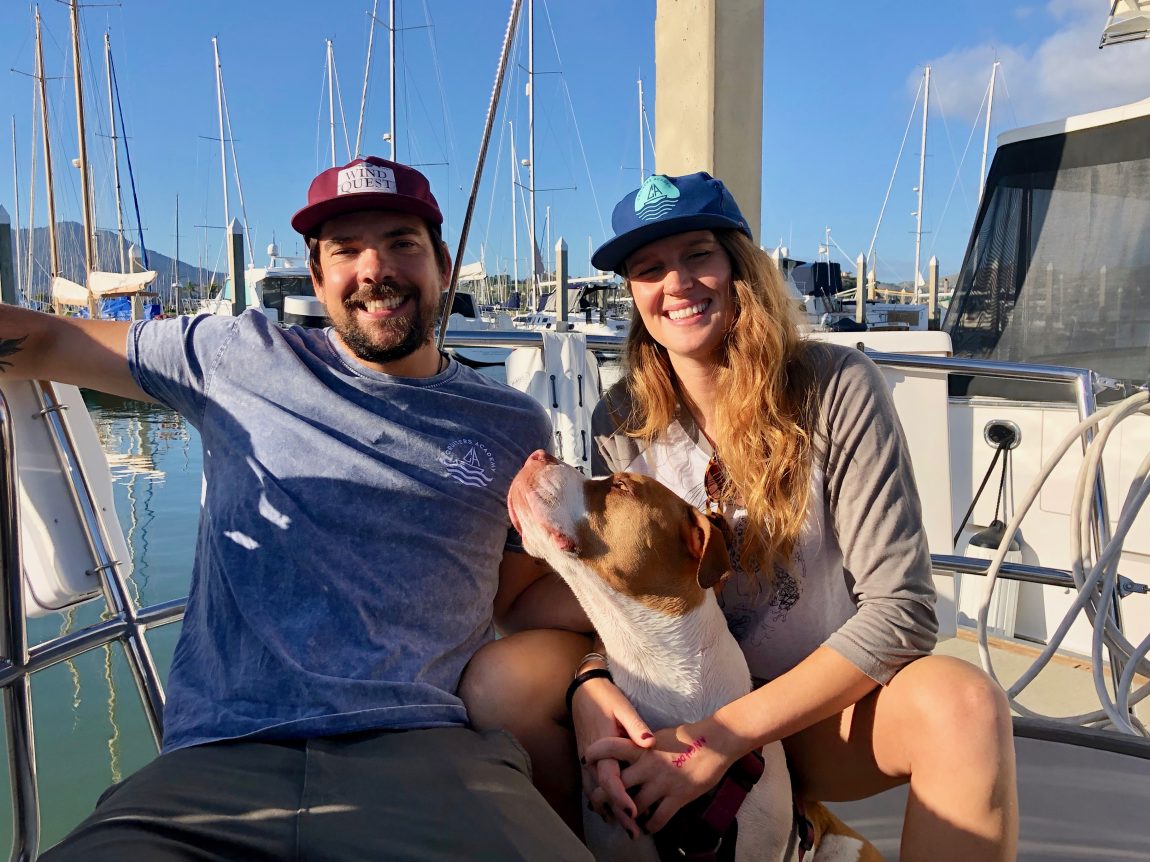
Here’s a small sample of what you will hear in this episode:
- How do you keep happiness as your drive?
- When did Brady figure out Blue was a woman?
- How did they get into sailing?
- What did they learn on Delos?
- How do you sail successfully as a couple?
- Where did the idea for 80° North come from?
- What’s the healing power of sailing?
- Short Tacks: What are Brady and Blue’s bucket-list sailing destinations?
Learn more about Brady and Blue at CruisersAcademy.com and 80NorthSeries.com.
Listen to the episode on Apple Podcasts, Spotify, Google Podcasts, and your other favorite podcast spots — follow and leave a 5-star review if you’re feeling the Good Jibes!
EWOL Propellers — Setting the Pitch
For more information visit Ewol Propellers.
A Bunny Bash Will Be Hopping Our Way
On Saturday, April 16, St. Francis Yacht Club will host the Bunny Bash, a grade 5 (entry-level) match-racing regatta. Designed in part as a graduation exam for sailors participating in the 2022 StFYC Spring Match Race Clinic Series, the Bunny Bash is now open to all interested parties with some knowledge and experience in the match-racing discipline and a desire to improve their skills in actual competition. Skippers should send an email requesting an invitation for their team to the event’s coach, Nicole Breault, at [email protected], and include their sailing résumé. (Please note: Only skippers who receive an invitation will be able to register.)
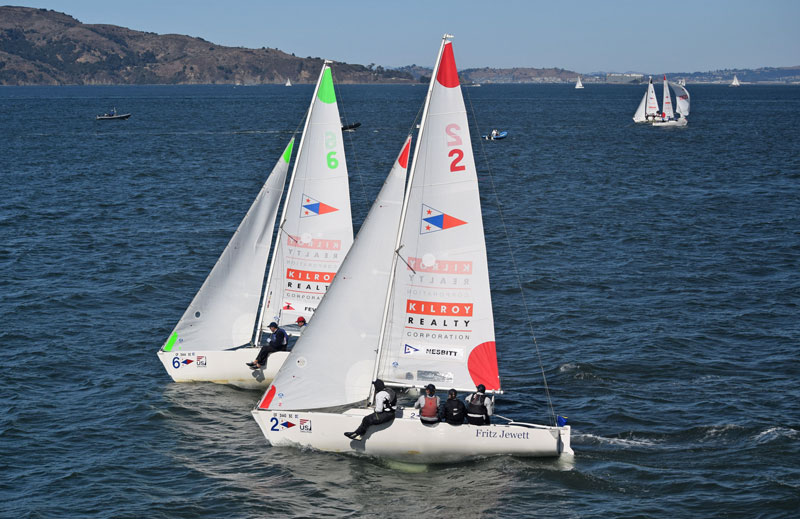
Check out the Notice of Race here.
Watt a Boat: ‘Sqoop’ Gets an Electrical Makeover
In February we shared Jay Whitlan’s story about the transformation of his Laguna 26 into a square- rigged sailboat, which he then named Sqoop. Here Jay recounts the work he did to upgrade Sqoop‘s aged electrical system to a safe, modern setup.
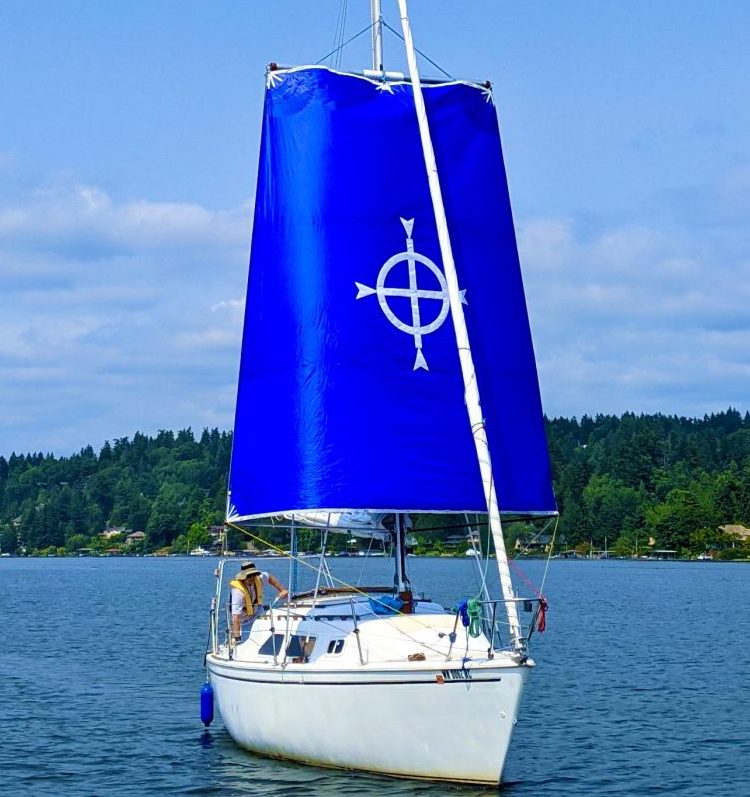
When I purchased Sqoop, the electrical system was what you’d expect to find on a 35+-year-old boat with multiple owners — a tangle of chaotic wiring and a schematic that made little sense. I’ll describe three issues I discovered and then dealt with as a DIY’er, while referencing Don Casey’s Sailboat Electrics Simplified. Hopefully, none of this will sound familiar to you!
During the pre-purchase survey, I was pleasantly surprised to find that the boat had a functioning 1500W inverter; being able to run a drill, air pump or similar AC appliance when away from the dock can be quite useful! The inverter was connected to the battery with a fairly short length of beefy, one-gauge cable, meaning both the ampacity and the voltage drop of the circuit were more than acceptable.
Unfortunately, neither the positive nor the negative cable was restrained correctly, and both were routed through a single (un-grommeted) hole in a fiberglass bulkhead. Most concerningly, I couldn’t find any circuit protection after tracing the entire wire run! Here’s the potential nightmare: The positive and negative cables chafe on the edges of the hole, the insulation wears away, the positive cable grounds to the negative cable, and the massive surge of current starts a fire that burns the boat to the waterline.
To avoid this unpleasant scenario, I added an ANL fuse block (with a 120-amp fuse) to the circuit, as close to the battery as possible, drilled a new hole in the bulkhead, installed grommets, separated the positive lead from the negative, and secured all cables with clamps or tie locks.
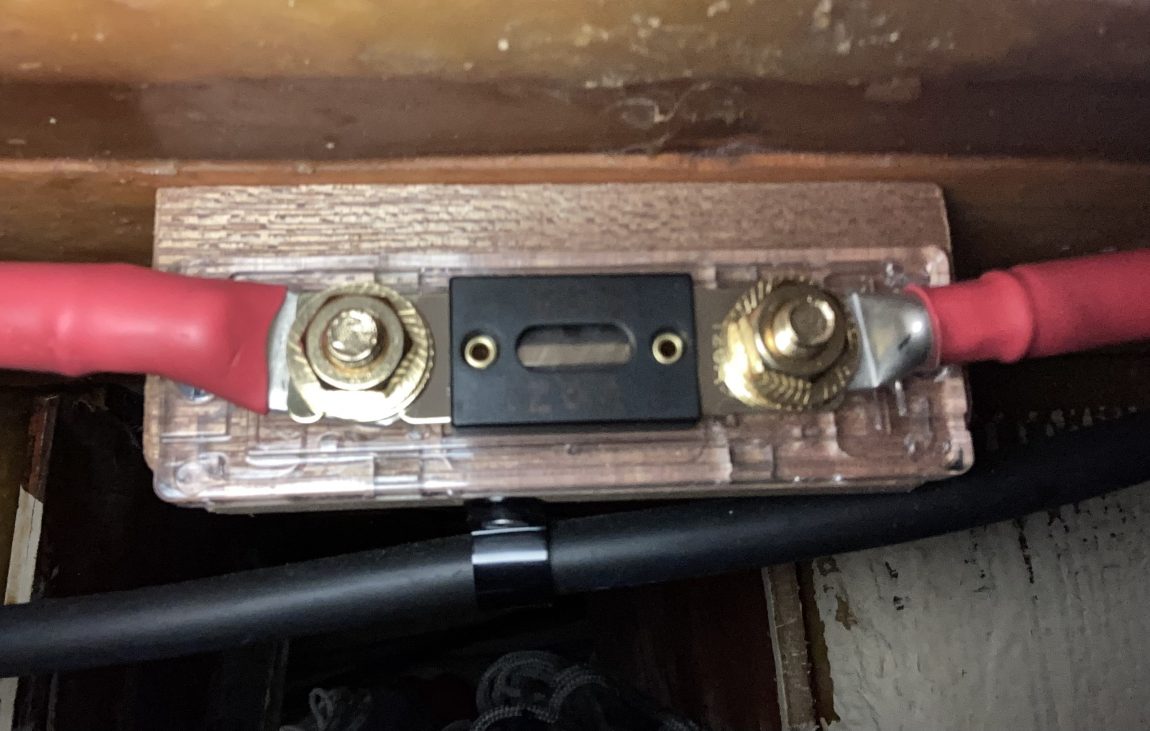
A few days later, while trying to make sense of the wire nest surrounding the main DC bus bar, I noted a fairly large 6 AWG cable running from the bus bar to a fuse block with a 100-amp fuse. The return ground cable was 8 AWG (smaller than the positive lead), which was puzzling, since 8 AWG cable is not rated to carry 100 amps of current. Before doing anything, I replaced the 100-amp fuse with a 40-amp fuse; now at least the fuse will blow before the wire starts melting! Next, I had to figure out where this cable ran to, and what in the heck it powered. So I started tracing its path through the innards of the boat.
Eventually, I found the other end over by the nav desk. It terminated with a pigtail containing two small 18 AWG wires, each powering a low-current device. Why were these large 6 AWG/8 AWG cables powering a combined circuit load of less than five amps? I’ll never know for sure, but perhaps the boat once had a smaller inverter and this was the power lead?
Anyway, since this high-load circuit was already installed, I figured I might as well make use of it. I rerouted the cables, crimped on some new ring terminals, and connected them to a remote fuse block that I installed under the nav desk. All the devices at the nav station (VHF radio, desk light, CD/stereo, DC outlets) were then wired to this fuse block, allowing me to remove oodles of old wiring that ran cross-cabin, and enabling the future addition of voltaic goodies (an AIS receiver is on my wish list).
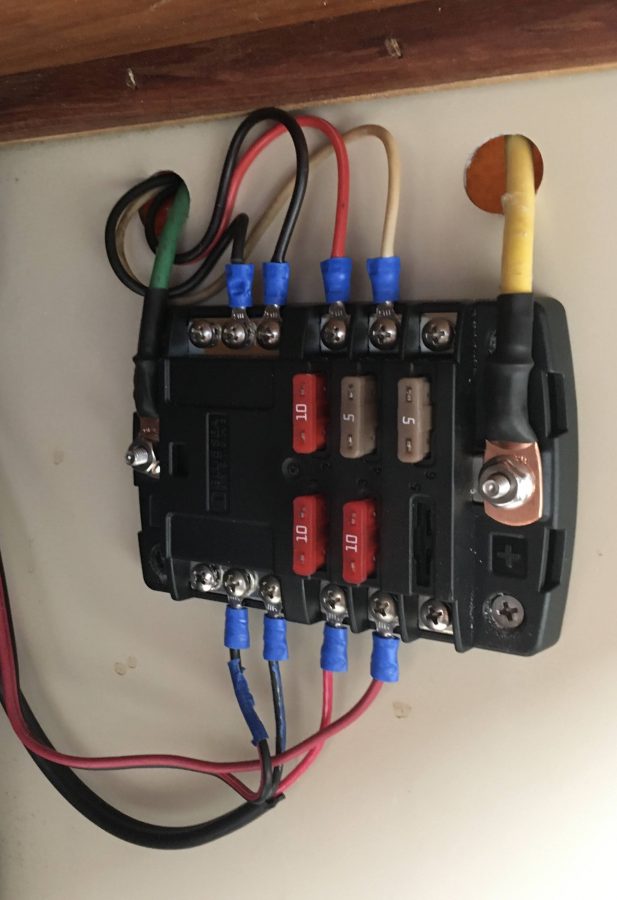
My last uncomfortable discovery — the boat’s AC system had no shorepower disconnect switch. Although not (yet) required, I installed an ELCI breaker in the V-berth. This kept the breaker within the required 10 feet of the shorepower cord receptacle (located in the anchor locker). The ELCI breaker will protect the boat from a faulty dockside power source, but more importantly, it will prevent Sqoop from causing an ESD fatality.
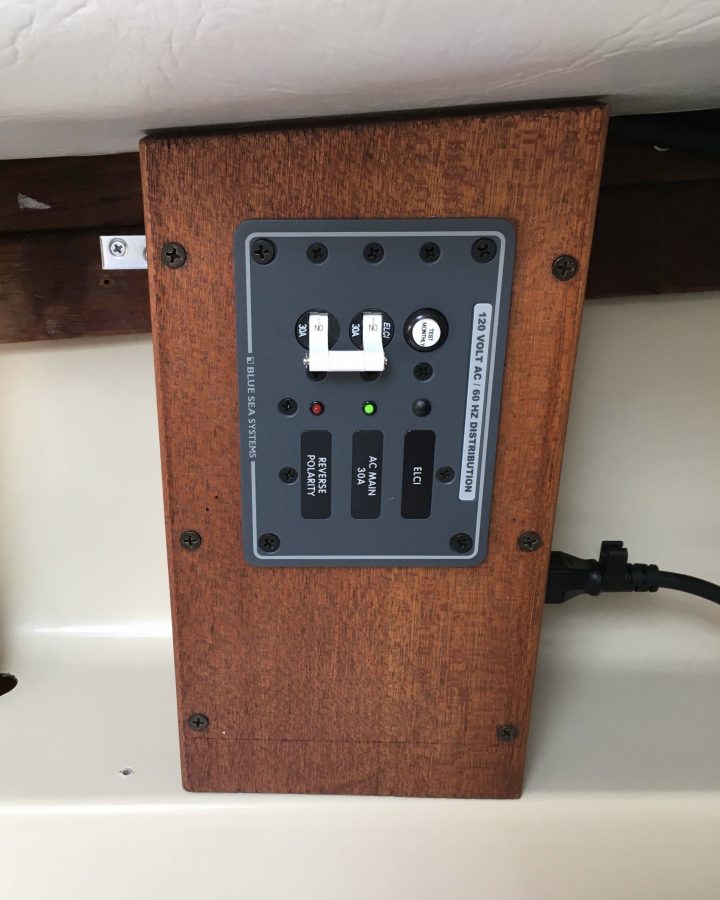
It’s great having all these electrical toys onboard, but in a marine environment, and on an older boat, it pays big seamanship dividends to ensure things have been installed and wired correctly.
To view the table I used to conduct a load analysis and organize the electrical system, click on the link: Sqoop electrical system


